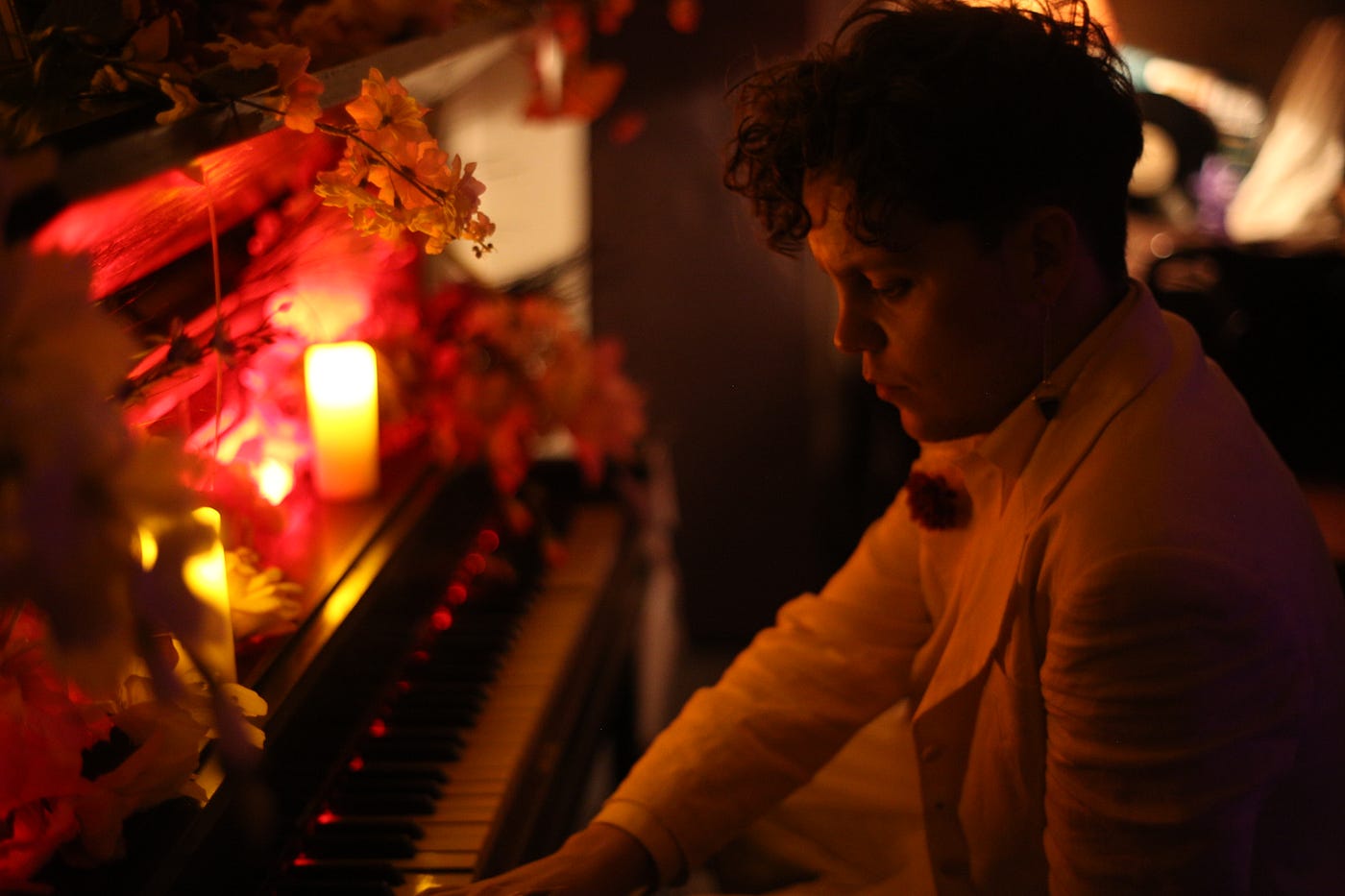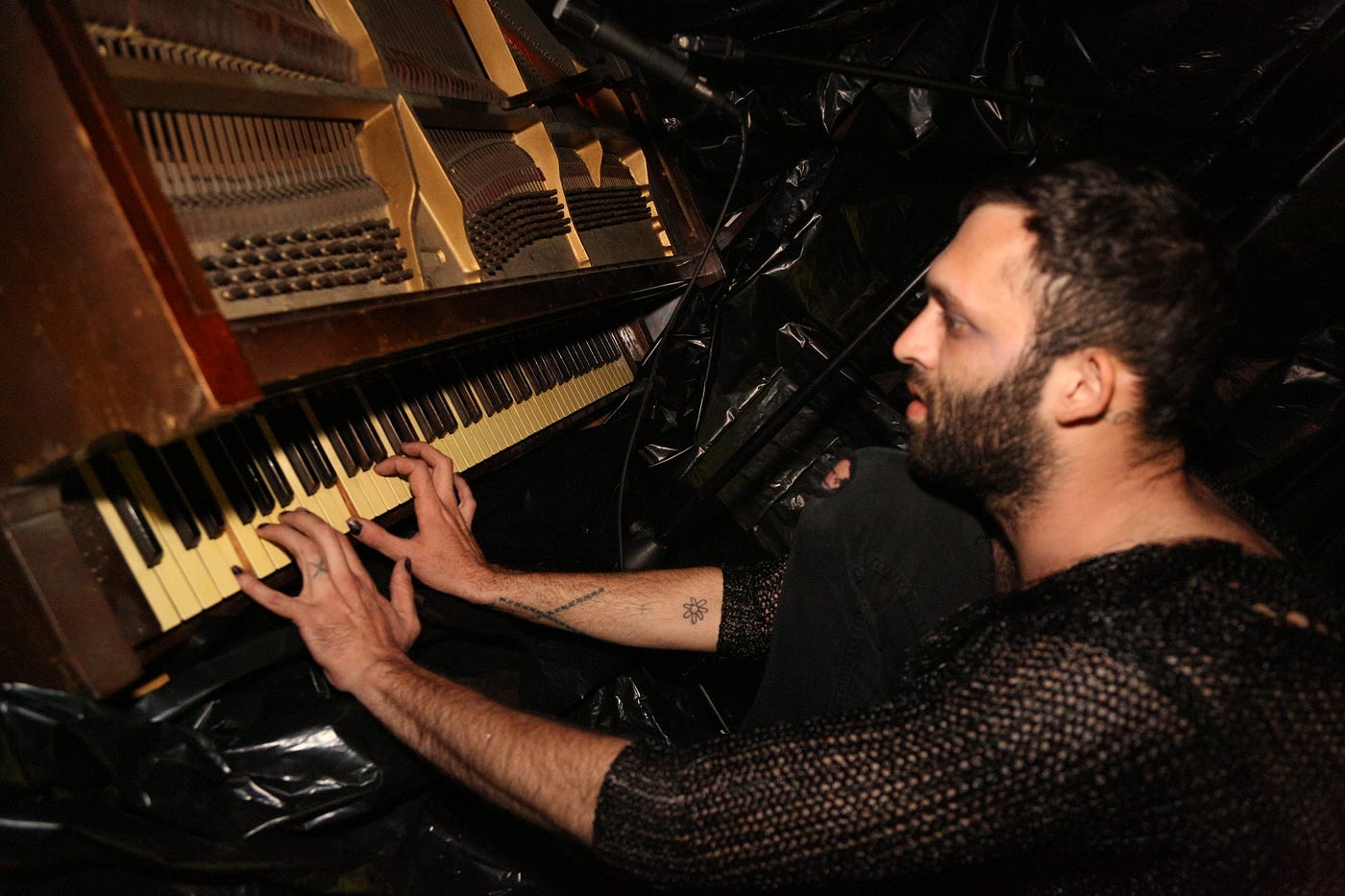
Disclaimer: the creators of this production are colleagues of the reviewer’s in a community non-profit.
As a company, Ceaseless Fun — the devised theatre based shingle of director Derek Spencer, recently joined by Meredith Treninen — has become one of the most interesting voices in Los Angeles’ burgeoning immersive theatre scene. Their last show, Agnosia, was a bold experiment in structure that paid off in the form of an intimate meditation on loss.
Spencer is not one to be content to rest on his laurels, and the second entry in a planned three show season pushes the aesthetic and structural bounds of his work in new directions. The results include some of the most moving sequences I’ve encountered in some time, in a container that doesn’t always hold all the pieces together.
Inspired by the Epic of Gilgamesh, They Who Saw The Deep (abbreviated as TWSTD) is once again a thematic exploration, relying on scene work developed in conjunction with the oh-so-game cast to riff on the story of Gilgamesh and Enkidu. For those who, like yours truly, have forgotten their college reading the gist of the story is this: Gilgamesh, hero and king, looses his best friend and blood brother Enkidu which inspires him to go on a quest for immortality. Or to look at it another way: he is driven by grief to try to beat Death itself.

Here “The Deep” refers to the place Gilgamesh went on his quest. A likely reference to the Flood which is often associated with the figure of Utnapishtim, the immortal whom the hero seeks. The “They” refers to the whole of the cast, each of whom seem to be wrapped up in their own reality, drifting from time to time into the orbit of the other players and the audience.
At first this division works well, with the on-boarding of TWSTD doing a lovely job of establishing mood, tone, and connection. The location that the company has secured feels like it was designed by the same people who built the Winchester Mystery House, only on a shoestring budget. It is surprising, to say the least, and by the end of the play is put to good use.
As guests trickle in two by two the cast routes them through a few pre-set tracks before dropping them off in the central play space, where characters are living out their own little loops. This opens up the possibility of exploration, and the occasional moment of getting pulled into a track. It’s not quite a sandbox and not quite a dark ride at this point, but still pays off a sense of curiosity.
One sequence early on, when I was lured into an alcove and instructed to sit with my back to an actor who then began to sway back and forth so that I was physically tipping between two other characters as the three recited text began to move me to tears. I cannot for the life of me remember what they were saying, only that they had successfully physicalized the tension of being suspended between two sets of ideas. In that moment a thrill of electricity went through me: had Ceaseless Fun cracked a code? Were we in store for a masterpiece?

As more patrons arrived — more and more, a veritable Flood themselves — the lack of connection between many of the looping characters started to wear thin. There were echoes of the gorgeous vocal technique found in Agnosia wherein two actors managed to create a soundscape that let their words play out like the strophe/antistrophe of a Greek chorus, but here it was challenged by the cacophony of multiple scenes playing out at once. A similar situation undermined some of the work in CF’s electric Why I Want To Fuck Ronald Reagan, and so it was somewhat disappointing to find it here again. At moments I found myself wanting to either have the dialogue pumped into my ears via headphones through an elaborate tracking system, or as another patron noted after the show all the actors mic’d and pumped into the space via speakers.

This was only an occasional issue. More pressing was that it was hard to discern connections between the various cast members. This caused the most consternation for the first act of the show. Hanging close to a character as they worked a loop over and over rarely felt like it paid off, and neither did chasing after a character as they made a swift exit from a scene.
Get Noah J Nelson’s stories in your inbox
Join Medium for free to get updates from this writer.
SubscribeSubscribe
As the Flood continued it began to get distracting. Sight lines got tricky, and the old problem of checking on other patron’s faces to see what they were making out of the action crept in.
After what felt like too long, the action coalesced and then exploded out, opening up new pathways and some more fantastic group and one-on-one scenes. The second act starts to really move, and while it’s still hard to discern the narrative threads — if any — between many of the characters the thematic ones start to sing. It is also here that the production design kicks into overdrive, rewarding the adventurous with a room after room of curiosities. It helps to know that much of what you’re going to find was already there. Which is the truly weird part.

Towards the end I found myself, quite by accident, in the pathway of the actor who had drawn me into the space: Juliet Deem. Deem was in Treninen’s Grief, and I first encountered her at Marike Splint’s Among Us. Since the later I’ve followed her on Instagram, which gave an extra meta-level punch to the one-on-one (or in this case two-on-one, as director Spencer slipped in to watch the climatic scene unfold) which capped off a somewhat lengthy series of what can only be called tests.
Again I found myself on the verge of tears, suppressing the instinct to try and hug Deem, as she presented her “autobiography” behind a previously forbidden door. I don’t want to say much else, because it’s a great sequence and deserves untainted eyes.
There are doubtless other moments like this in TWSTD that I came no where close to encountering. Such, of course, is the nature of a sandbox experience. Yet for a sandbox to truly click it requires discernible lines of connections between characters that can be traced physically by the audience. There are numerous ways to produce that, but the directive here seems to be more concerned with creating singular moments that are often heavily abstracted. As such, TWSTD lacks some of the punch of CF’s Reagan, even as the individual moments demonstrate that the company is making strides forward in their techniques.
Which brings us to the question of who is TWSTD for?

It would, sadly, make for a confusing first immersive experience for the uninitiated. Students of the form will find things to enjoy, or at least be moved by, and connoisseurs of experimental theatre may get revved up by TWSTD’s commitment to abstraction. Anyone who loves exploring strange spaces will be richly rewarded. I’ve spent almost no time praising the set and lighting, which is a shame because there is some great atmospheric work going on. Almost to the point where some rooms feel underutilized.
For my part I’d like to see Spencer and Treninen push this piece, or at least this form, a bit more. To take the lessons learned on this run and pick a path to illustrate the connections between characters even if, as the action of TWSTD suggests, each of them is the protagonist of their own story, living in their own little world.
TWSTD is a compass pointing towards great things to come.
They Who Saw The Deep runs through May 20th at an undisclosed location in Los Angeles’ Koreatown. Tickets are $40.
No Proscenium is a labor of love made possible by our generous Patreon backers: join them today!
In addition to the No Proscenium web site, our podcast, and our newsletters, you can find NoPro on Twitter, Facebook, YouTube, Instagram, in our Facebook community Everything Immersive, and on our Slack forum.















Discussion